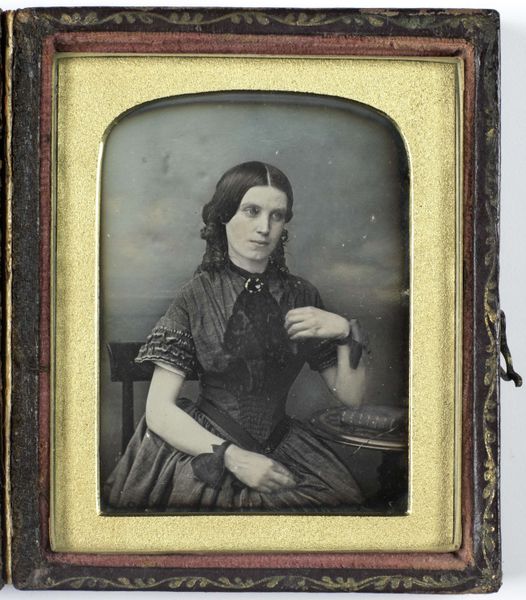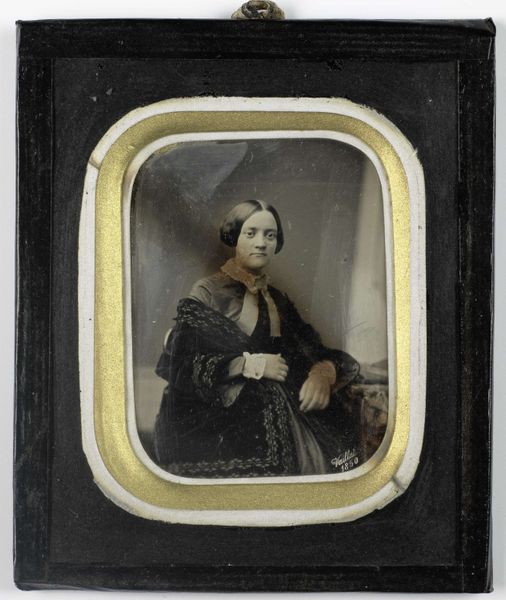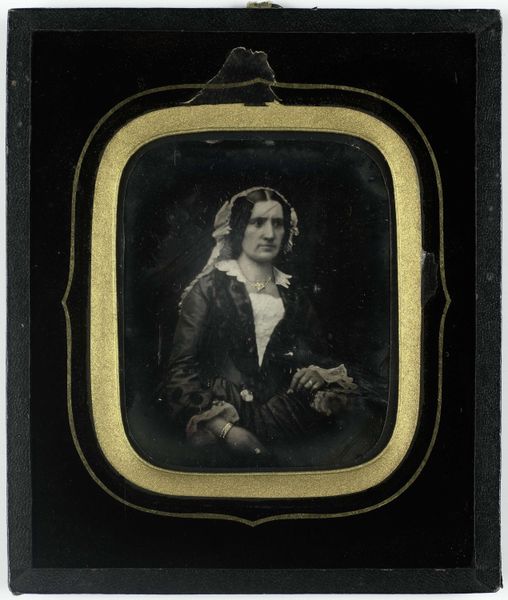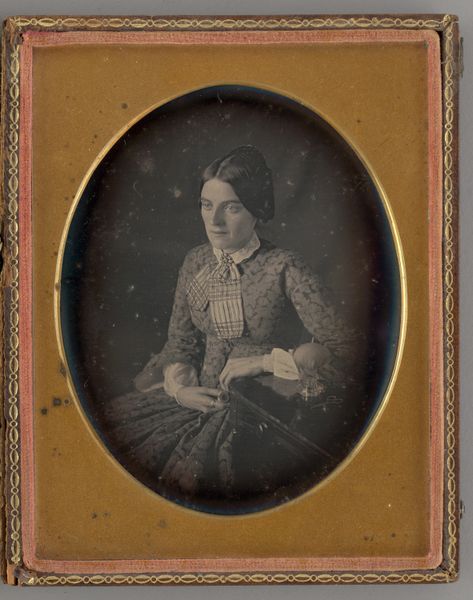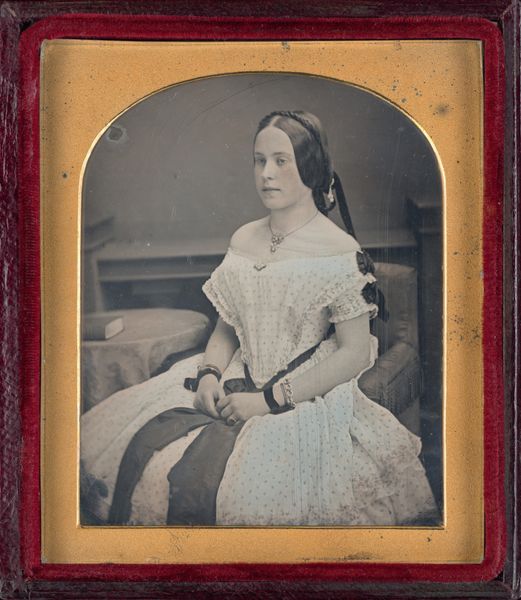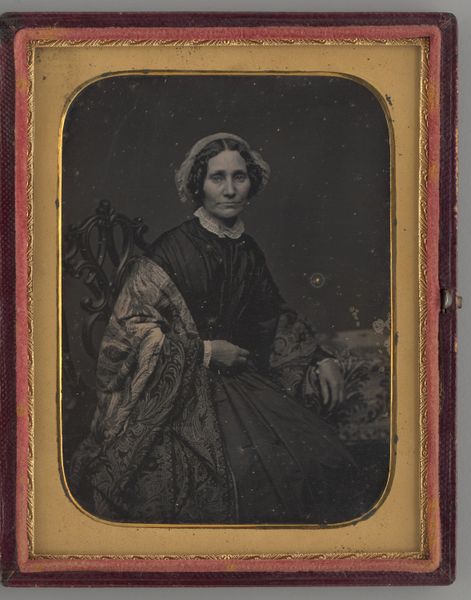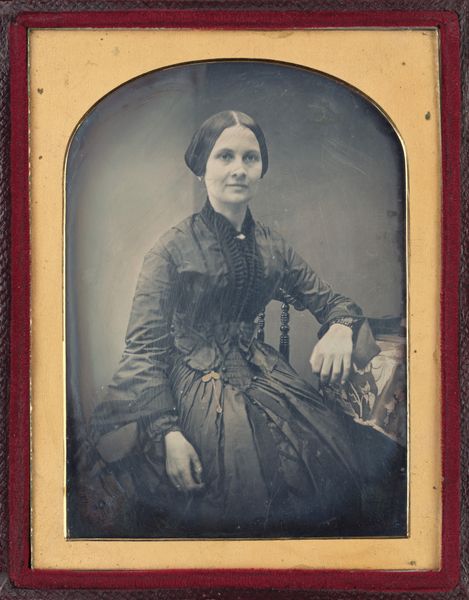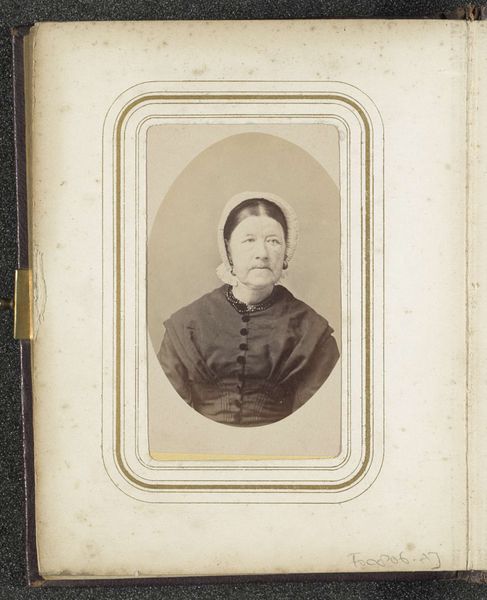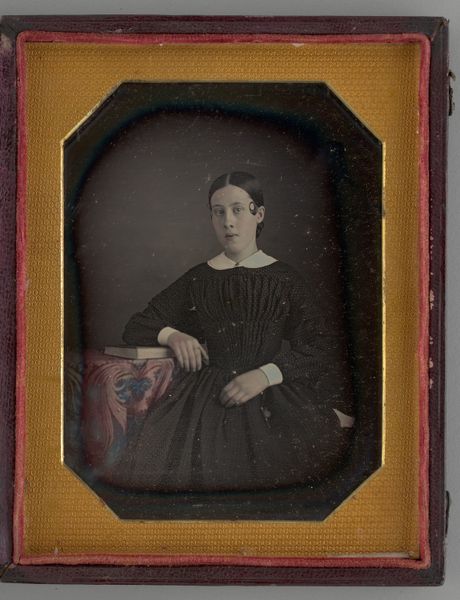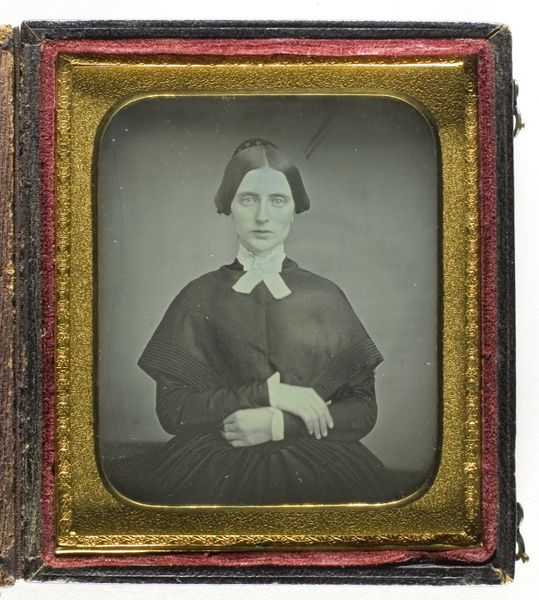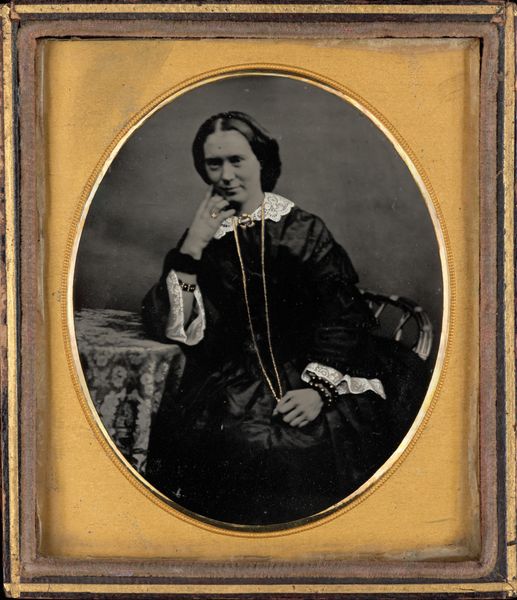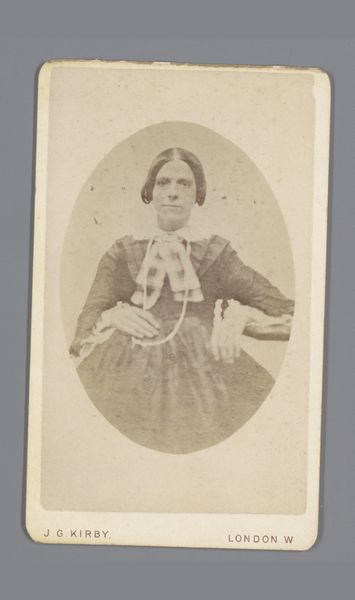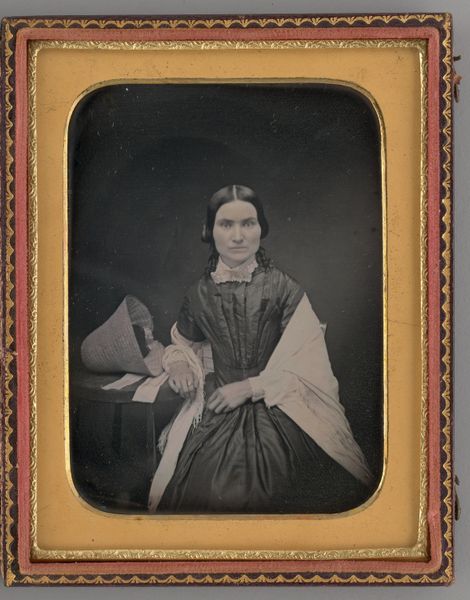
daguerreotype, photography
#
portrait
#
daguerreotype
#
photography
#
romanticism
Dimensions: height 93 mm, width 69 mm, height 147 mm, width 127 mm, thickness 5 mm
Copyright: Rijks Museum: Open Domain
Curator: This daguerreotype, entitled *Portret van een onbekende jonge vrouw*, is believed to have been created sometime between 1840 and 1860. Editor: Immediately, I notice how small it is, like a memento carefully preserved. The dark blacks and pale grays lend a quiet, melancholic tone to the woman’s countenance. Curator: The material itself, the daguerreotype, is crucial. Each one is unique, a direct positive image on a silvered copper plate. This inherent uniqueness resonates with the subject, an unknown young woman whose identity is now irrecoverable. The photographic technology of the time also dictated particular formal requirements in the sitting, with resulting effects on pose and composition. Editor: Absolutely, the photographic process shapes everything. Her pose appears so deliberate, yet still intimate. One might wonder about the social conditions in which photographic portraits became commonplace, even essential, for certain social strata. Her dress is nice and this would indicate she is reasonably well-off, or aspires to that. Curator: And consider the subtle compositional choices. The contrast is quite balanced in tone and density, yet it almost centers us on her clasped hands and voluminous sleeve cuffs which frame them, pulling the eye towards her careful arrangement. The texture and fall of her clothing draw visual interest. The oval framing inside the square case mimics the shape of her face, guiding the gaze. It's not simply a representation; it is also a design. Editor: And who might have owned this image? Was it a lover, family? Her likeness becomes a trace of an otherwise undocumented life, offering tantalizing hints about bourgeois Romanticism and a sentimental visual economy developing among Northern Europeans in the middle decades of the nineteenth century. Curator: It is fascinating how much emotion is embedded into something created by a largely chemical, material and mechanistic method. Editor: Precisely! This "unknown young woman" compels me to reflect on how public identity and private memory have shifted across time, preserved in the material object.
Comments
No comments
Be the first to comment and join the conversation on the ultimate creative platform.
